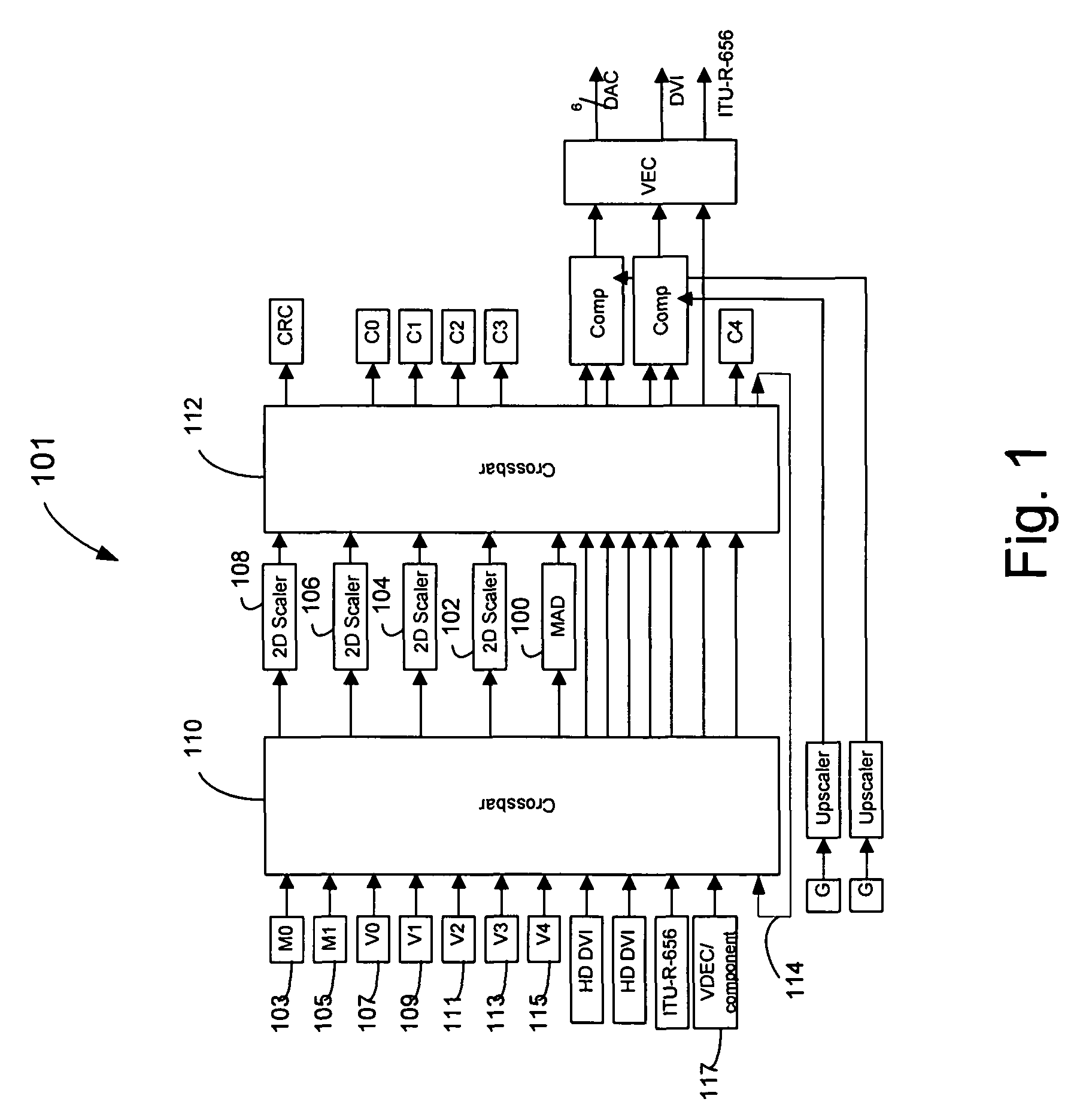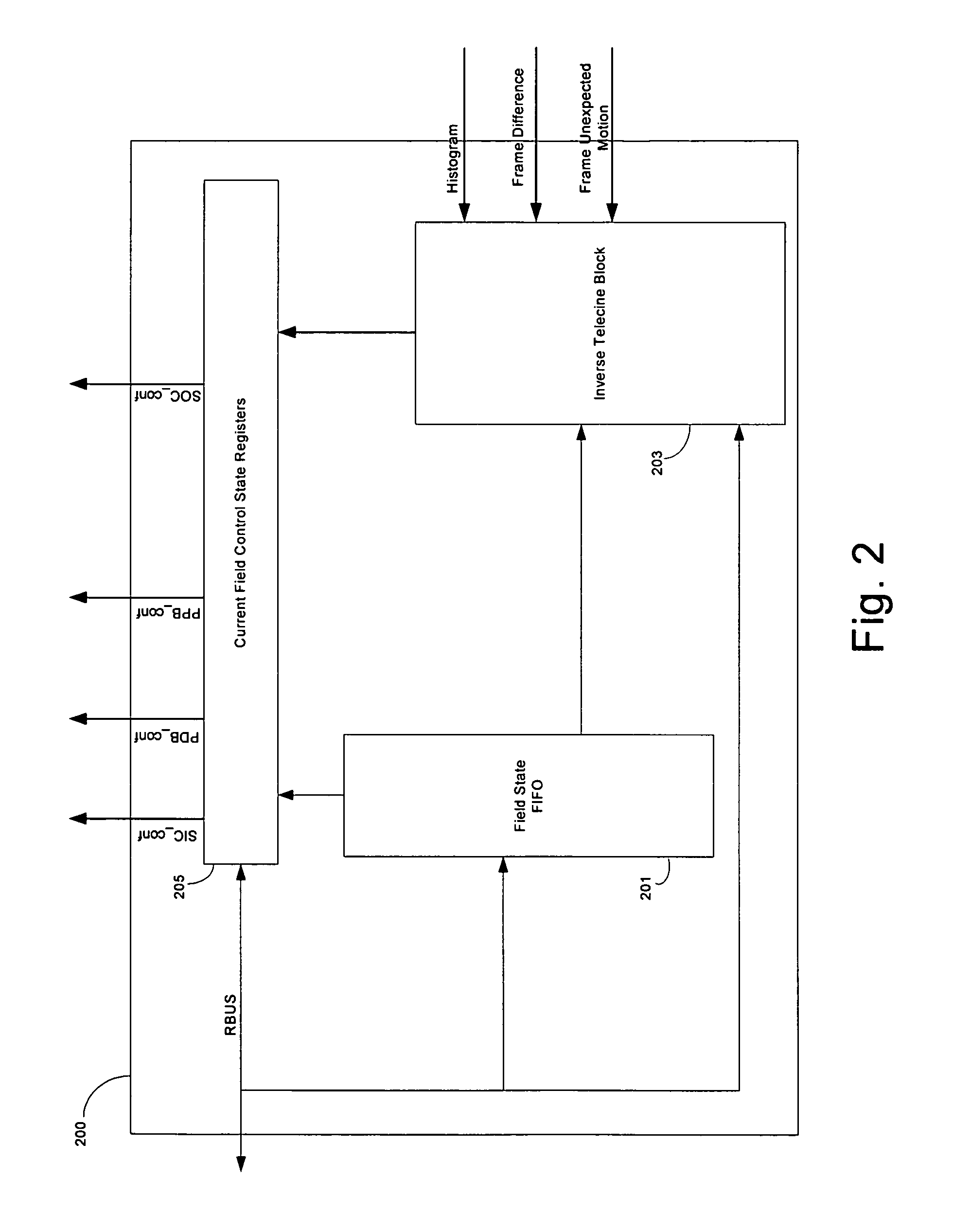Method and system for trick mode support in a motion adaptive deinterlacer with inverse telecine
a technology of motion adaptive deinterlacer and trick mode, applied in the field of method and system for trick mode support in motion adaptive deinterlacer with inverse telecine, can solve the problems of reducing vertical resolution, reducing temporal resolution, and jittering up and down of horizontal lines and other areas of high vertical detail
- Summary
- Abstract
- Description
- Claims
- Application Information
AI Technical Summary
Problems solved by technology
Method used
Image
Examples
Embodiment Construction
[0042]Aspects of the present invention relate to processing video signals in motion adaptive deinterlacers. More specifically, certain embodiments of the present invention relate to a method and system for trick mode support in a motion adaptive deinterlacer with inverse telecine. In an embodiment of the present invention, a per-pixel multi-field motion adaptive deinterlacer with inverse telecine may provide high quality linear playback video with mitigation of unwanted artifacts from the occasional unexpected non-alternating field type. The motion adaptive deinterlacer may also provide good quality trick mode video output, where a non-alternating field type is often required and to be expected. An embodiment of the present invention may also provide a method for trick mode support that may allow for high quality trick modes or 50 to 60 Hz conversion simultaneously with the inverse telecine of film-sourced material.
[0043]An embodiment of the present invention may be utilized in a mo...
PUM
 Login to view more
Login to view more Abstract
Description
Claims
Application Information
 Login to view more
Login to view more - R&D Engineer
- R&D Manager
- IP Professional
- Industry Leading Data Capabilities
- Powerful AI technology
- Patent DNA Extraction
Browse by: Latest US Patents, China's latest patents, Technical Efficacy Thesaurus, Application Domain, Technology Topic.
© 2024 PatSnap. All rights reserved.Legal|Privacy policy|Modern Slavery Act Transparency Statement|Sitemap



